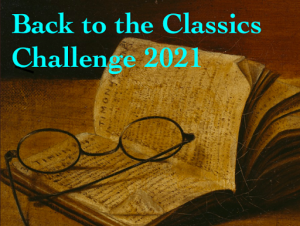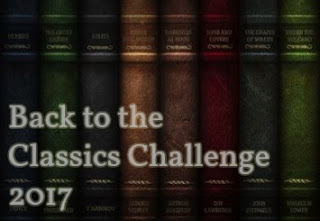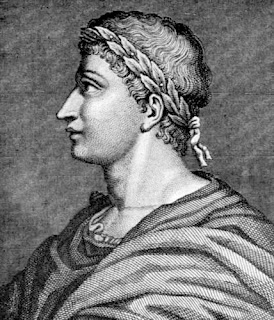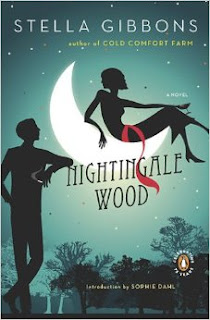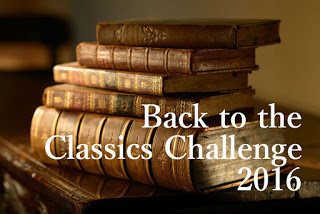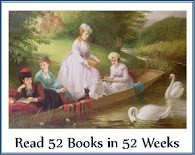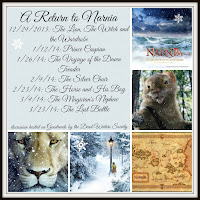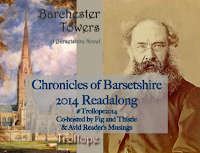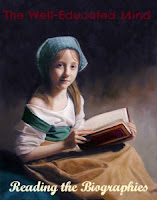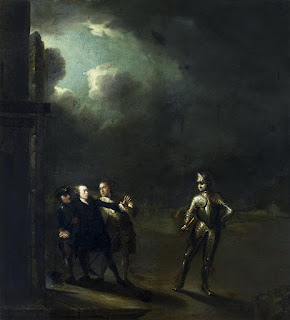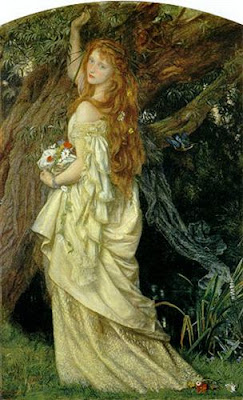I don’t have any set books planned for this one, but I’d like to read some counties that I hadn’t covered in the 2015 Reading England challenge. And I still have to read my nemesis, Thomas Hardy, so his works are a possibility.
I’m planning to aim for the Mix-and-Match Shakespearean, reading, watching, performing (ha!), and/or listening to 5 plays. I think I’ll begin with Henry V, since it’s the only play that I haven’t read from the Henriad.
Jay at
Bibliophilopolis hosts The
Deal Me In challenge, my most challenging of challenges! I tried it for the first time last year and failed miserably, yet it was my most valuable challenge because it forced me to read essays, poetry, short stories and children’s classics that I wouldn’t have read otherwise. My list for this year:
Clubs – Short Stories
A – Cabbages and Kings – O’Henry
2 – The Runaway – Anton Chekhov
3 – The Queen of Spades – Alexander Pushkin
4 – Le Horla – Guy de Maupassant
5 – The Tell-Tale Heart – Edgar Allan Poe
6 – The Life You Save Might Be Your Own- Flannery O’Connor
7 – The Honest Thief – Fyodor Dostoyevsky
8 – A Little Woman – Franz Kafka
9 – A Haunted House – Virginia Woolf
10 – The Birds – Anton Chekhov
J – The Yellow Wallpaper – Charlotte Gilman
Q – The Eyes – Edith Wharton
K – Signs and Symbols – Vladimir Nabakov
Spades – Essays
A – Milton – Charles Williams
2 – Doodles in the Dictionary – Aldous Huxley
3 – A Midsummer Night’s Dream – G.K. Chesterton
4 – On A Faithful Friend – Virginia Woolf
5 – Shooting an Elephant – George Orwell
6 – Hamlet : The Prince or the Poem – C.S. Lewis
7 – The Tyranny of Bad Journalism – G.K. Chesterton
8 – The World of Tomorrow – E.B. White
9 – Out of Your Car, Off Your Horse – Wendell Berry
10 – Sense – C.S. Lewis
J – Sex, Economy, Freedom & Community – Wendell Berry
Q – Different Tastes in Literature – C.S. Lewis
K – Vulgarity – G.K. Chesterton
Diamonds – Poetry
A – A Man’s a Man for a’That – Robert Burns
2 – Gesang Der Geister Über Den Wassern – Johann Wolfgang
von Goethe
3 – The Morning of Life – Victor Hugo
4 – Sonnett XXIII – Garcilaso de la Vega
5 – A Lover’s Complaint – William Shakespeare
6 – Resolution and Independence – William Wordsworth
7 – Ode III – Fray Luis de León
8 – Do Not Go Gentle Into That Good Night – Dylan Thomas
9 – To A Mouse – Robert Burns
10 – Tears, Idle Tears – Alfred LordTennyson
J – Easter Wings – George Hebert
Q – On His Blindness – John Milton
K – Phoenix and the Turtle – William Shakespeare
Hearts – Children’s Classic
A – A Triumph for Flavius – Caroline Dale Snedeker
2 – Three Greek Children – Alfred Church
3 – The Story of the Treasure Seekers – E. Nesbit
4 – Detectives in Togas – Henry Winterfeld
5 – Big John’s Secret – Eleanore M. Jewett
6 – The Tanglewood’s Secret – Patricia St. John
7 – The Wolves of Willoughy Chase – Joan Aiken
8 – Red Sails to Capri – Ann Weil
9 – Sprig of Broom – Barbara Willard
10 – Teddy’s Button – Amy LeFeuvre
J – Call It Courage – Armstrong Sperry
Q – Tales from Chaucer – Eleanor Farjeon
K – Beyond the Desert Gate – Mary Ray
And last, but most exciting, is the Ancient Greek Reading Challenge which I posted about here. I’m planning on reading the dramatists, Aeschylus, Euripides, Sophocles, some comedies, and perhaps even make it to Plato and Aristotle if I’m feeling rather brave.
Other than these 2016 challenges, I have on-going projects such as:
My C.S. Lewis Project:
I did wonderfully the first year but last year was a sorry sight. I need to read at least a couple of Lewis this year. Mere Christianity should be a “gimme” and I’d also love to start and finish The Screwtape Letters. Otherwise Miracles is my favourite and The Abolition of Man would be a good one to try, as I struggled with it the first time I read it.
My Barsetshire Chronicles Read:
Sigh! This was a complete failure last year. I didn’t even get one book read. The next up is Framley Parsonage, so I’m going to have to focus, focus, focus!
The Well-Educated Mind Biographies:
Okay, this is one challenge where I’m doing well, thanks to Ruth! She keeps me honest. Next up is Gertrude Stein’s The Autobiography of Alice B. Toklas. There are 10 biographies left before we move on to Histories, so hopefully we’ll finish them all this year.
My Shakespeare Project:
I’ve been moving reasonably slowly through this lately, but at least I’m moving. I hope my Bardathon challenge will help me read some more of the Bard in 2016.
I’m also doing a few read-alongs including O’s The Pickwick Papers Read-Along, Amanda’s Children’s Literature Event in April, and a few of us are reading Ovid’s Metamorphoses (beginning now) and Edmund Spenser’s The Fairie Queene (beginning mid-April). If anyone wants to join in on the last two, please let me know. We keep getting new recruits!


